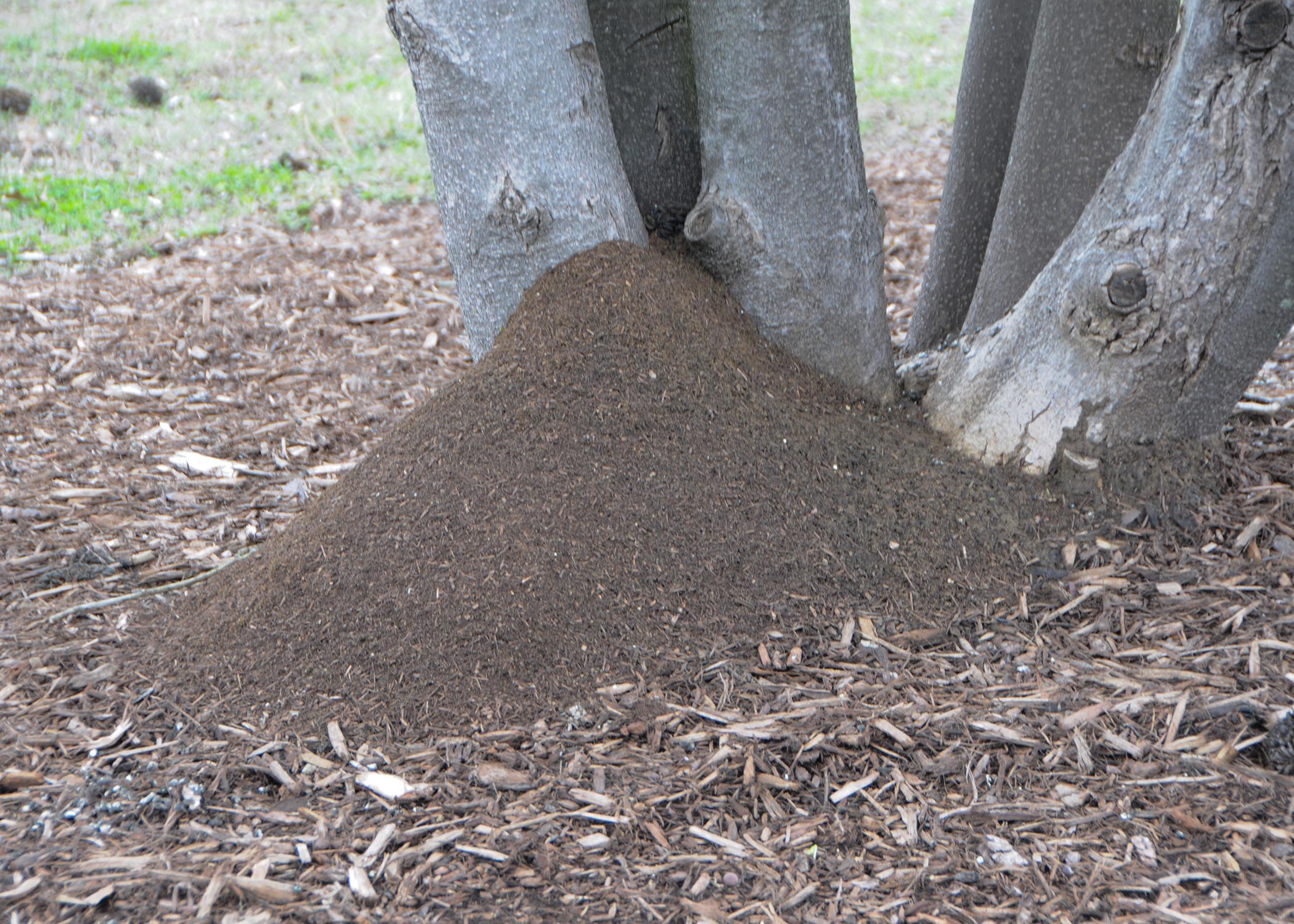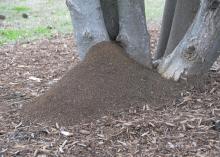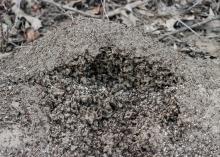Use baits, mound treatments to effectively control fire ants
STARKVILLE, Miss. -- Sunshine and long days make summertime in the South desirable for people, but those same conditions are exactly what allows the dreaded, imported fire ants to thrive.
Almost any sunny, grassy area left unattended will soon be home to fire ants. Fire ants were accidentally imported from South America to Mobile in the 1930s and have since spread throughout the Southeast.
Blake Layton, entomology specialist with the Mississippi State University Extension Service, said physically, they are reddish brown to reddish black and relatively small, measuring between one-eighth and one-fourth of an inch long. Fire ants are well known for their mounds in the landscape, but mostly for their burning attacks.
“The most notorious characteristic that sets fire ants apart from regular ants is their venomous sting,” Layton said. “Fire ants possess a stinger at the rear end of their bodies, which they use to deliver painful stings.
“The stings of fire ants contain a unique venom which causes a painful, burning sensation and produces an itchy, raised, puss-filled welt on the skin,” he said.
Layton said most of the other ants commonly encountered in southern landscapes do not sting.
Keeping lawns and landscapes free of fire ants is possible, but it is a never-ending process.
“The key to successful fire ant control is to be proactive,” Layton said. “If you don’t want to have big fire ant mounds in your yard, you must treat before you have big fire ant mounds in your yard.”
For every visible mound a homeowner sees, there may be a dozen or more smaller colonies that are too small to notice.
While some people blame their neighbors for their own fire ant problems, Layton said fire ants reproduce and spread by swarming.
“The males and females fly into the air to mate, and then the mated queens fall back to earth to start new colonies,” he said. “During this mating flight, they may travel several miles, depending on wind.
“It is these mated females raining back down that cause new fire ant colonies, though it takes about six months to a year for a new colony to grow into a large mound,” he said.
Fire ants are best controlled at this early colony development stage. The most effective method is a consistent, two-step process of baits followed by individual mound control.
“Learn to use baits properly and preventively, and you will see 80 to 90% fewer fire ant mounds in the lawn,” Layton said. “Apply a granular fire ant bait to the entire yard three times per year -- around Easter, Independence Day and Labor Day. Baits work on the mounds you can see, as well as on the ones you can’t see.”
Fire ants collect the bait granules and bring them back to the colony. Follow label directions, as it does not take a lot of bait material to provide appropriate control. Amdro, Advion and Extinguish Plus are examples of effective fire ant baits.
As soon as they appear, treat individual mounds with a dry powder mound treatment that includes acephate, such as Ortho Fire Ant Killer or Surrender Fire Ant Killer. Follow label directions for safe use.
Fire ants are persistent, and an ant-free yard last year does not guarantee the same this year. Alternatively, failure to treat fire ants one year allows the problem to grow the coming year.
Find more information in MSU Extension Publication 2429, “Control Fire Ants in Your Yard,” . For detailed information on fire ant biology, fire ant control in special situations and more, visit .




